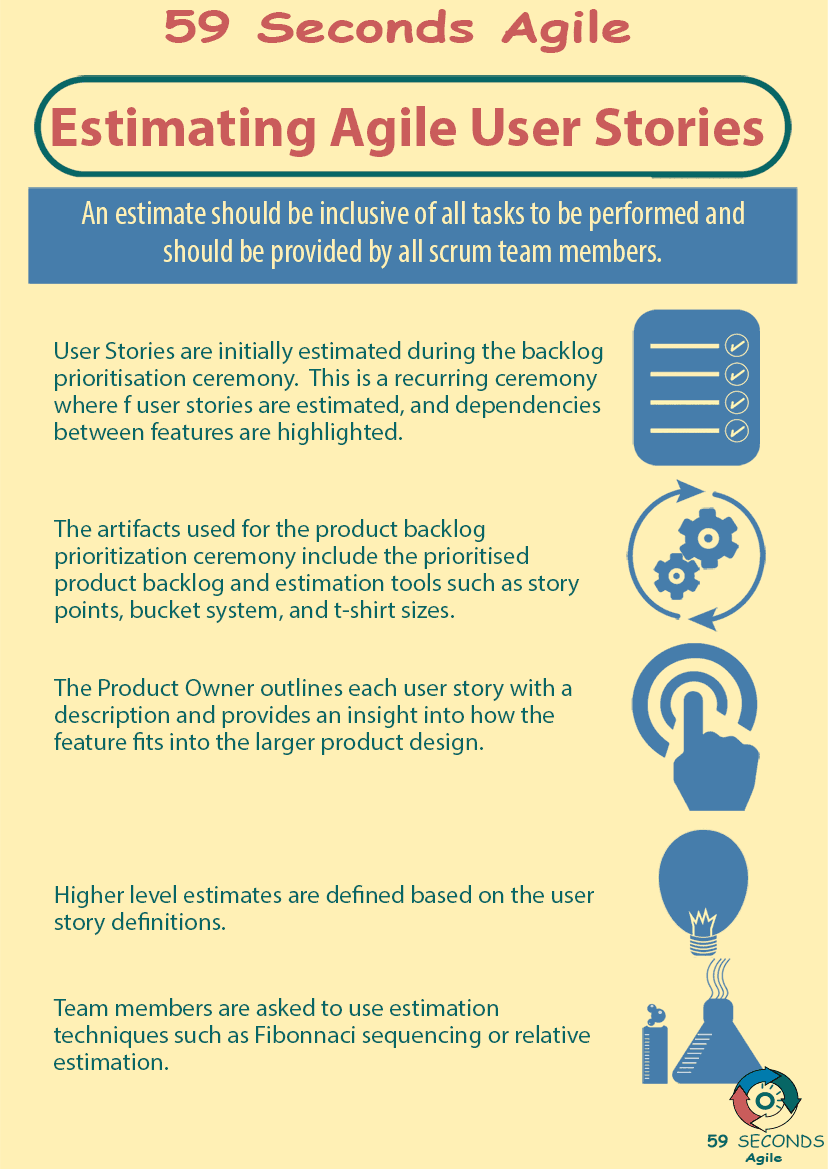
Estimating User Stories for Scrum Masters
One of the principles of self-managing teams in Agile Scrum is working collaboratively with the Product Owner to effectively deliver the highest priority features. Scrum teams are guided by the Scrum Master and measure the velocity that a team has in delivering features during each sprint. Velocity is a key metric calculated at the end of the first sprint that determines the number of features that a scrum team has the capacity to deliver during each sprint. During the product backlog prioritization and subsequent sprint planning sessions, the team will provide estimates for user stories and related tasks. The Scrum Master is the facilitator to guide the team in using Agile principles during the estimation process. Those Scrum Masters with technical knowledge can also be a source of reason by using velocity metrics against the general optimism of team members.
The estimation of user stories starts with the product backlog refinement ceremony and continues through the life of each sprint. The Product Owner, Scrum Master and Scrum Team Members lead the three key roles in estimation. Stakeholders can and should be included in limited numbers in the backlog ceremonies when there are conversations that are best held with the impacted individuals or end users. An estimate should be inclusive of all tasks to be performed and should be provided by all scrum team members. Estimates, the acceptance criteria and the Definition of Done (DoD) are the basis for approval of features during the sprint review.
Product Backlog Prioritization
The product backlog prioritization ceremony is primarily lead by the Product Owner. The Scrum Master supports these efforts by facilitating the discussions to honor Agile scrum principles. The objective of the product backlog prioritization ceremony is not only to refine features into epics and user stories but, to also get buy-in from all scrum team members. Participating in a product backlog prioritization ceremony sets the stage for efficient sprint planning meetings and gives all team members ownership in the larger vision of the project.

Product Backlog Prioritization
The backlog ceremony should have specific goals and objectives in mind that are introduced by the Product Owner and agreed to by all participants. The goal may be to refine the features and divide the deliverables into smaller epics and subsequent user stories. Prioritization takes place and during effective ceremonies, dependencies between features are highlighted. Identification of dependencies and risks can minimize technical debt that may negatively impact the Return on Investment (ROI) of a project. The artifacts used for the product backlog prioritization ceremony are the product backlog and estimation tools (i.e., story points, bucket system, or t-shirt sizes).
The Scrum Master will facilitate the ceremony by reminding all participants what the initial objectives are and facilitating feedback on agreement by the team members. The Product Owner should be the owner of the goals and objectives of the inputs having been received from the project owner and key stakeholders. If there are questions on any of these items, it is important that the Scrum Master facilitate team member understanding before moving forward with breakdown and estimation of features for delivery. The Product Owner then outlines each feature with a description and objective of the feature in the larger product design. Epics are then defined in order to group similar high-level deliverables together. User stories are high-level definitions of requirements under each epic.
Our Favourite Agile Books
We found these books great for finding out more information on Agile Scrum:
Higher level estimates are defined based on the user story definitions. The reason that these estimates are high level relates to the fact that team members are asked to use estimation techniques such as Fibonnaci sequencing or relative estimation with only the title and description of a user story available. While not a detailed estimate, this will allow the team to refine the prioritization and scope of the effort. The Scrum Master is the facilitator to guide the team in discussions where scope, priorities, and dependencies may need to be adjusted. Early release planning is managed here and frequently throughout the life of a project as the product backlog is prioritized.
Approval of the estimates and the impact on the scope will be the responsibility of the Product Owner as the stakeholder liaison.

